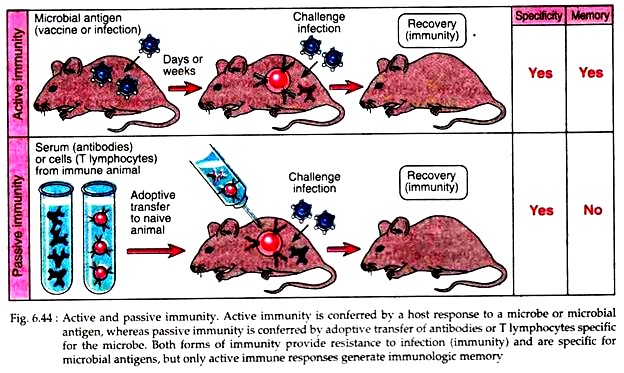Protective immunity against a microbe may be induced by the host’s response to the microbe or by the transfer of antibodies or lymphocytes specific for the microbe. Such form of adaptive immunity that is induced, by exposure to a foreign antigen is called active immunity (Fig. 6.44), because the immunized individual plays an active role in responding to the antigen.
Individuals and lymphocytes that have not encountered a particular antigen are said to be naive. On the other hand, individuals who have responded to a microbial antigen and are protected from subsequent exposures to that microbe are said to be immune.
In experimental situations, immunity can also be conferred on an individual by transferring serum or lymphocytes from a specifically immunized individual, through a process called adoptive transfer. The recipient of such a transfer becomes immune to a particular antigen without ever having been exposed to or having responded to that antigen. Therefore, such form of immunity is called passive immunity.
ADVERTISEMENTS:
Passive immunization is a useful method for conferring resistance rapidly, without having to wait for an active immune response to develop. For example, transfer of maternal antibodies to the foetus, which enables new-borns to combat infections before they acquire the ability to produce antibodies themselves.
Again, many lethal infections like tetanus can be prevented by administrating antibodies from immunized animals.
